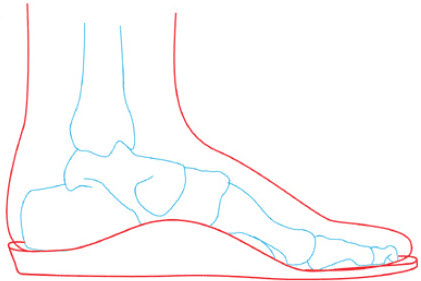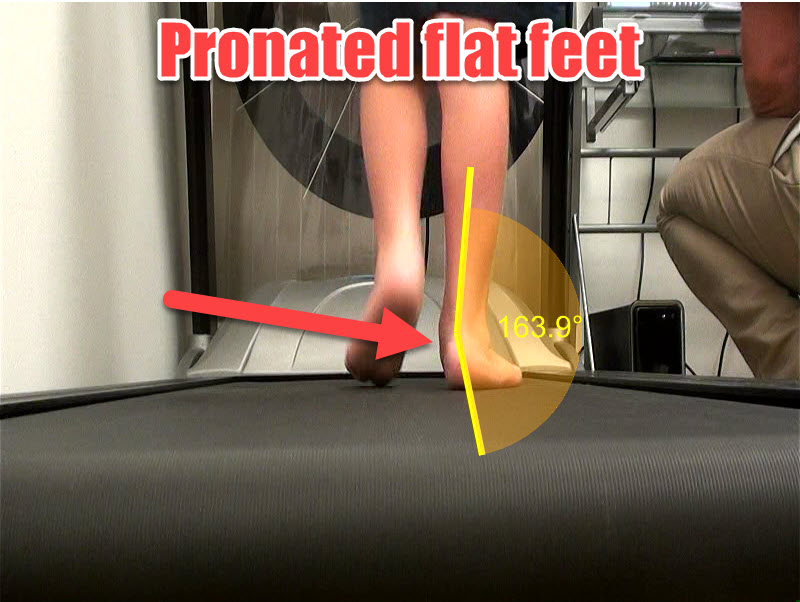Our Kids Orthotics have been tried and tested over 15 years and are a popular addition to many of our retail outlets especially at back to school time.
Shop online for our best selling & most popular childrens orthotic insoles:
-
Ergonx Ultra Soft
Regular price €29,95 EURRegular priceUnit price per -
Dual Density
Regular price €41,95 EURRegular priceUnit price per -
Pure Cushion
Regular price €23,95 EURRegular priceUnit price per -
Ergonx Kids Sports
Regular price €23,95 EURRegular priceUnit price per

Children often need more foot support
What to consider when buying childrens orthotics?
When considering childrens feet and childrens orthotics we need to think differently to adult feet. A childs foot health can affect the development of not only their feet, but their knees, legs and lower back.
When selecting children’s orthotics we need to choose orthotics that will support but not over correct the foot, be soft but not soo soft and firm but not too firm.

Orthotics (orthoses) help to support the arches of a child’s foot, limit over pronation and prevent foot pains.
What do orthotics do for kids feet?
Orthotics for kids should help to support the foot and limit over pronation, cushion the foot, fit the shoe correctly and above all be comfortable enough to wear all day.
The most common types of orthotic devices used for children will support over pronation and increase shock absorbtion in the lower limb. If possible full length sports orthotics are the best as they will stay fixed in place in the shoe.

Orthotics for a child's foot should support the feet without over correcting the feet.
Childrens Orthotics
Children’s orthotics aim to support the arch, foot and ankle in walking and standing so their development can continue normally. By supporting the childs foot during development, children’s orthotics help to limit excessive strain on the feet and legs, this leads to less growing pains, heel pain and more pain free activity and sports.

Overpronation during gait (walking) is a sign that your child may need supportive orthotics.
Gait analysis in Children
When we watch our children walk there are a few things that usually stand out. If a biomechanical assessment is needed to assess a child for orthotics it is best to see your local podiatrist. Podiatry clinics can perform gait analysis, this will require and appointment and follow up with a prescription for orthotics.
When should children wear orthotics?
As a general rule orthotics are only working when the child is weight bearing. Children’s orthotics are best worn when we are on our feet for a long time or a long distance. The more the child is weight bearing the more benefit the child will gain from an orthotic device.
Childrens feet – How do they grow?
When we are young our feet are more flexible and adaptable to the ground. Because of the increased flexibility they also have a tendacy to roll in too far. If there is a family history of flat feet or foot injuries it is often at an early age where the child will begin to suffer from foot pains. It is often during these growing periods where the inital treatment is started with foot orthotics.

How orthotics help flat feet in children
Flat feet in children, heel pain and discomfort is often caused by over pronation. Foot orthotics will help to limit the impact of this.
Flat feet in Children
Flat feet are a common concern amongst parents, however it is not always what it seems. When a child is below the age of 7 years their foot should appear flatter than the average adults foot. This is due to the everted (rolled in) nature of the calcaneus (heel) in growth. There is of course normal limits and these are usually assessed in the podiatry clinic by podiatrists.
Treatment of flat feet involves supporting the arches of the feet, which will in turn help to straighten the lower limb.

Look for feet that roll in more than usual
Pronated or excessively flat feet are an indicator that children’s orthotics may be needed to treat growing pains.
Signs that flat feet and over pronation may be an issue
There are a few teltale signs that your childs feet may be causing them foot pain or aching legs. Below is a list of some but not all of the symptoms that are a tip that the pain and symptoms may be originating from your child’s foot.
- Aching Legs
- Wanting to be picked up
- Not being active
- Feet that roll excessively towards the midline of the body
- Uneaven wearing on shoesGait (walking) pattern different to other children (especially siblings)
- Flexible flat feet / Flat foot
Any of the above issues are a sign that your child may need orthotics to help to correct their foot position.

Heel pain from sever's disease can lead to further issues in childrens feet
Heel pain in children (Sever's Disease) can be the result of over pronation irritating the calcaneal apophysis (growth plate). An orthotic insole will help to relieve the pain from sever’s disease.
Sever’s Disease
Sever’s disease (calcaneal apophysitis) refers to a pain located in the back of the heel of a child (calcaneus growth plate). The pain is usallly made worse on activity, especially in football boots or when playing sports in shoes with low heels or bare feet.
Sever’s disease is caused by traction on the growth plate in the heel of the child from over pronation, tight muscles and excessively worn shoes.
We treat sever’s disease with orthotics, stretching and stretgthening of the calf muscles and good supportive footwear.

Helping to reduce pain
Orthotic insoles and physiotherapy will help to relieve the pain from Osgood schlatters syndrome.
Osgood Schlatter’s Syndrome
This type of growth pain occurs under the knee cap where the patella tendon inderts into the Tibia. When we overwork our quadriceps muscle or our leg internally rotates too much there is excessive strain placed on the patella ligament.
Treatment for Osgood schlatters syndrome involves controlling over pronation with the use of an orthotic insole, muscls stretching and strengthening and the use of appropriate footwear.

Best orthotics for childrens feet
Orthotic insoles for a child’s feet. If non custom made orthotics are not sufficient then a custom made orthotics should be considered.
Orthotics for children’s feet
When supporting children’s feet with orthotic insoles containing arch support, we are usually trying to align the foot so it is in a more functional position. This reduced the amount of stress and strain on the growing locations in the feet.
The overall goal is to limit the amount of pain during growth and keep the child as active as possible.

It’s best to gradually wear in childrens orthotics
Orthoses should be worn in gradually as part of your foot pain treatment. Custom orthotics will take longer to wear in than non custom orthotics.
Wearing in your orthotics (Breaking in your orthotics)
When we are wearing orthotic insoles for the first time it can take a little time to get used to your orthotics particularly if you hvae not worn an arch support orthotic in the past. Children have very adaptable feet, however it can still take up to 1-2 weeks for supportive orthotics to become completely comfortable.
Below is the wear in instructions we often use when fitting orthotics to a child’s feet for the first time:
- Wear your orthotics for 1 hour on the first day
- Increase the wear by 1 hour each day (eg day 2 = 2 hours, day 3=3hours)
- If you are having no problems with your orthotics it is ok to wear them all day on the first day
- Things to watch out for – Aching legs, irritation in the arches, blisters, lower back ache) – usually this is a sign that you are doing too much too soon
- As a general rule your orthotics will feel strange for aorund 4 days and should be comfortable by aournd 7-10 days.

About the Author
Kent Elliot (Podiatrist). B App. Sc. Pod (Hons), B.Sc(HMS). M.A. Pod. A
Kent graduated from the University of Queensland with a Bachelor of Science (majoring in Human Movement Studies) and from Podiatry at The Queensland University of Technology (QUT). During this time Kent took a special interest in exercise and conditioning training, orthotics, and plantar fasciitis. Kent has a personal interest in and has participated in many sports including rugby, athletics, boxing, tennis, and running.









